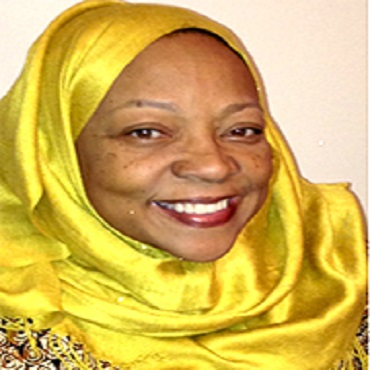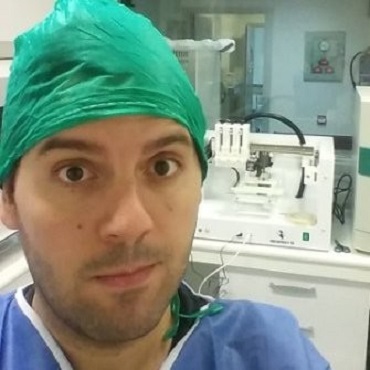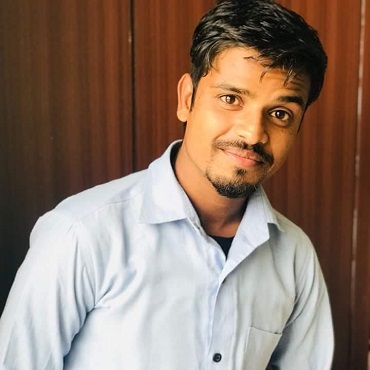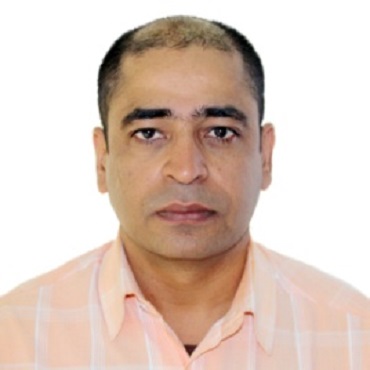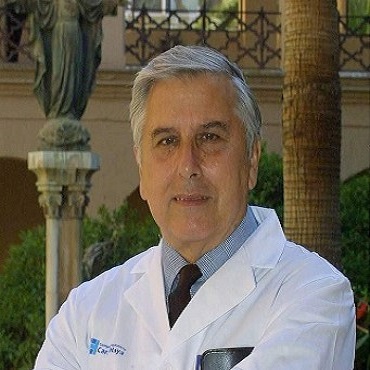Scientific Program
Keynote Session:
Title: Data sources for bioreactor digital twin development
Biography:
Bill Whitford is Strategic Solutions Leader, BioProcess, GE Healthcare in Logan, UT with over 20 years’ experience in biotechnology product and process development. He joined the company 16 years ago as a team leader in R&D developing products supporting biomass expansion, protein expression and virus secretion in mammalian and invertebrate cell lines. Products he has commercialized include defined and animal product-free hybridoma media, fed-batch supplements, and aqueous lipid dispersions. An invited lecturer at international conferences, Bill has published over 250 articles, book chapters and patents in several areas of bioproduction. He now enjoys such industry activities as serving on the editorial advisory board for BioProcess International.
Abstract:
Benefits of incorporating digital biomanufacturing include increases in process understanding, monitoring and analytics; improvements in plant design and automation; better process design and flow; establishment of advanced embedded, distributed, or modular control units; and support of enterprise resource planning and manufacturing execution systems. Key initiatives in the continued advancement of digital biomanufacturing in process development and control include de-siloing data, predictive simulations, model reference adaptive control, dynamic enterprise control algorithms and process automation. The collection, organization and application of large amounts of data is a major element of this initiative. Just one enabling technology here is termed “big data”. Generally, this refers to the use of very large amounts of structured and unstructured data from many sources in statistical and mathematical algorithms. In bioprocessing, sources of data include at-line or even on-line monitoring from both PD and manufacturing; early PD data from outside of the final design space; historic process data from validated production runs; process data from other sites running the same platform; or even data from disparate but related platforms. Another important source is from such activities as published cellular platform metabolic pathways, flux and gene regulation-- along with general mammalian transcriptomic and proteomic understandings. These data, coupled with well-designed algorithms provide both a quantitative understanding of cell physiology and advanced model-based control enabling advanced process development, operational efficiency, and business needs. The ultimate goal is to generate individualized metabolic network and process parameter models to deeply represent specific host cell lines and bioprocesses. Yet, even early Digital Twin designs are capable of creating predictive simulations that can improve process development, control and event prediction.
Title: Proteomics in nutrition and health
Biography:
Fatimah Linda Collier Jackson is an American biologist and anthropologist. She received her B.A. (cum laude and with distinction in all subjects), M.A., and Ph.D. from Cornell University. She was a professor of biological anthropology at the University of North Carolina at Chapel Hill (UNC). She now teaches at Howard University in Washington, D.C. She became professor emerita of applied biological anthropology at the University of Maryland after teaching there for 20 years. She is the recipient of the Distinguished Scholar Teacher Award from the University of Maryland in 1995. Jackson served as director of UNC's Institute of African American Research from 2009 to 2011. She serves now as the director/ curator of the W. Montague Cobb Research Lab. Her research on peoples of recent African-descent also led to appearances on the PBS program African American Lives and the BBC's Motherland.
Abstract:
TBA
Title: TBA
Biography:
Andrzej Joachimiak is the Director of Structural Biology Center and Midwest Center for Structural Genomics. He is an expert in synchrotron-based X-ray crystallography and structural biology. At Argonne, he has made significant contributions to the high-throughput crystallography using synchrotron radiation and the development of state-of-the-art facilities for macromolecular crystallography. The development and integration of the novel synchrotron beamlines, exploitation of the anomalous signal-based phasing methods in the third-generation environment and integration of hardware and software at the Structural Biology Center beamlines at the Advanced Photon Source contributed very strongly to the enhanced efficiency of such facilities worldwide.
Abstract:
TBA
Title: Lung-tumorigenic effects of air pollutant fine particulate matter via 15-lipoxygenase metabolites
Biography:
George G Chen is a professor in the Department of Surgery, Faculty of Medicine, the Chinese University of Hong Kong, China. He has extensive experience in cancer research. He has authored or co-authored more than 210 papers and has written a number of books or book chapters, with Web of Science Core Collection h-index: 33 and Google Scholar h-index: 41.
Abstract:
Air pollution is a major environmental risk to health and causes various diseases, especially respiratory diseases. Though epidemiological studies have clearly shown the connection between air pollutant fine particulate matter (PM2.5) and lung cancer, the mechanism of its tumorigenetic effects remains largely unknown. To this end, in this study we compared the lung tumorigenetic effects of PM2.5 with smoking carcinogen NNK on 15-lipoxygenases (15-LOXs), the enzymes that were previously demonstrated to involved in NNK-induced lung cancer. It was found that PM2.5 and NNK worked in a very similar way to inhibit 15-LOXs, reducing their metabolites, 15S-HETE and 13S-HODE. The change in 15-LOX metabolites led to stimulate lung cell proliferation, migration, and invasion, and cancer stem cell formation in the cultured lung cells. In vivo study further confirmed that the tumor formation rate and tumor growth was significantly higher/faster in mice receiving PM2.5 or NNK, along with a significant reduction in expression of 15-LOX proteins as well as their metabolites. We concluded that PM2.5 was experimentally a lung-tumorigen and it worked in a way similar to smoking carcinogen NNK to cause lung tumorigenesis via reducing 15-LOX metabolites. (M-Y Li, CSH Ng, Y Liu, AWY Kong, R Ho, E Chak, HL Qi, J Hao, IYP Wan, T Mok, MJ Underwood contributed to this work).
Oral Session 1:
- Metabolomics and Genomics |Biotechnology & Biochemistry |Toxicology And Metabolism| Pharmacology & Drug development |Metabolomics in Cancer Research
Title: An improved bio fabrication process to enhance cell survival of cartilage regeneration and functionality of the osteoarthritic knee when enriched with Bone Marrow Mesenchymal Stem Cells (MSC)
Biography:
Jose Manuel Baena, research associate "Advanced therapies: differentiation, regeneration and cancer" IBIMER,CIBM, Universidad de Granada. Founder of BRECA Health Care, pioneer in 3D printed custom made implants for orthopaedic surgery, and REGEMAT 3D, the first Spanish bioprinting company. Expert in innovation, business development and internationalization, lecturer in some business schools, he is passionate about biomedicine and technology. In his free time, he is also researcher at the Biopathology and Regenerative Medicine Institute (IBIMER).
Abstract:
Tissue regeneration (TR) is currently one of the most challenging biotechnology unsolved problems. Tissue engineering (TE) is a multidisciplinary science that aims at solving the problems of TR. TE could solve pathologies and improve the quality of life of billions of people around the world suffering from tissue damages. New advances in stem cell (SC) research for the regeneration of tissue injuries have opened a new promising research field. However, research carried out nowadays with two-dimensional (2D) cell cultures do not provide the expected results, as 2D cultures do not mimic the 3D structure of a living tissue.
Some of the commonly used polymers for cartilage regeneration are Poly-lactic acid (PLA) and its derivate as Poly-L-lactic acid (PLLA), Poly(glycolic acids) (PGAs) and derivate as Poly(lactic-co-glycolic acids) (PLGAs) and Poly caprolactone (PCL). All these materials can be printed using fused deposition modelling (FDM), a process in which a heated nozzle melt a thermoplastic filament and deposit it in a surface, drawing the outline and the internal filling of every layer. All these procedures use melting temperatures that decrease viability and cell survival. Research groups around the world are focusing their efforts in finding low temperature printing thermoplastics or restricted geometries that avoid the contact of the thermoplastic and cells at a higher temperature than the physiologically viable. This has mainly 2 problems; new biomaterials need a long procedure of clearance before they can be used in clinical used, and restrictions in geometries will limit the clinical application of 3D printing in TE.
Title: Cancer advancements and pharmaceutical sciences
Biography:
Fazal Khan pursuing b pharm from truba institute of pharmacy, bhopal rgpv university India. He is working as national general secretary also international exchange officer nfps working globally and four international chapters. Mr fazal Khan has done two review articles and more than 12 national and international conferences.Fazal Khan has done few workshop national and international conferences conducted. Fazal Khan has experience also last event as a organising committee member also coordination committe.
Abstract:
To prevent the Cancer and rise the quality of life for Cancer Patient. The Aids of Pharmaceutical development of Cancer. The Cancer know from 1600 B.C. But humans have no awareness about Cancer. But it became more vital when research began (18th& 19th Century). In 2002, 10 million people are affected by Cancer and by 2017 it increased to 15 million. It is mostly seen in people of age above 15 years, among them 7.4 million cases are of men and 8.7 cases are of women. The scientists expect that this range may increase to 24 million in the future.
Lung Cancer was most common Cancer with Worldwide contribution of 13% of the total population. Breast Cancer, which is mostly seen among women is the second most common Cancer with 1.7million cases. The drugs that are developed to treat different types of cancers are Cytotoxic Drug, Targeted Drug, Bave in 2014 Bavenico, Kymriah, Kisqali, Nerlyx, Rydap, Bosponsa, Tafinlar, Mekinist Opdivo.12%cancers are caused due to virus
Chemotherapy is one of the most widely used therapy to treat cancer.The therapy include Targeted therapy &Immune therapy or Gene therapy that changes the “T” cells of the patient in the lab to make them more effective on cancer.From 18th&19th century the cancer patients increased widely throughout the world from 10-15 million, with this the pharmaceutical aids of life sciences also increased. Among all types of cancers only 4 types of cancers are dangerous. Some of the cancers are treatable were as some are under research .Herpes Virus is used to treat Brain Cancer
Title: Applications of metabolomics to alzheimer disease
Biography:
Anil Batta is presently professor and senior consultant in Baba Farid University of Health Sciences/ GGS Medical College, Faridkot, Punjab, India. He did his M.B.B.S. and M.D. in Medical Biochemistry from Govt. Medical College, Patiala in 1984 and 1991, respectively. His research interest is mainly in clinical application especially cancer and drug de-addiction. He has supervised more than 15 M.D., M.Sc. and Doctorate researches and published more than 30 international research papers. He is the chief editor of America’s Journal of Biochemistry. He is also working as advisor to the editorial board of International Journal of Biological and Medical Research. Recently, he has been deputed advisor to Pakistan Medical Journal of Biochemistry. He has been attached as technical advisor to various national and international conferences in Biochemistry. He has been attached as hi-tech endocrinal, genetics and automated labs of GGS Medical College, Faridkot. He has chaired various sessions in the Biochemistry meets.
Abstract:
Progress toward the development of efficacious therapies for Alzheimer’s disease (AD) is halted by a lack of understanding early underlying pathological mechanisms. Systems biology encompasses several techniques including genomics, epigenomics, transcriptomics, proteomics, and metabolomics. Metabolomics is the newest omics platform that offers great potential for the diagnosis and prognosis of neurodegenerative diseases as an individual’s metabolome reflects alterations in genetic, transcript, and protein profiles and influences from the environment. Advancements in the field of metabolomics have demonstrated the complexity of dynamic changes associated with AD progression underscoring challenges with the development of efficacious therapeutic interventions. Defining systems-level alterations in AD could provide insights into disease mechanisms, reveal sex-specific changes, advance the development of biomarker panels, and aid in monitoring therapeutic efficacy, which should advance individualized medicine. Since metabolic pathways are largely conserved between species, metabolomics could improve the translation of preclinical research conducted in animal models of AD into humans. A summary of recent developments in the application of metabolomics to advance the AD field is provided below.
Title: Internet addiction and its association with sleep and depressive symptoms of undergraduate medical and nursing students of BPKIHS
Biography:
Surya Raj Profundity knowledge on Statistics/Biostatistics, research methods and data analysis along with teaching experiences for Masters/Bachelors level medical,public health, nursing and allied health sciences students. Conducted several health researches and excellent disseminating skill through international and national publications. Worked as a Consultant for many INGOs and NGOs.
Abstract:
In the new generation, the internet has become an important tool for education, entertainment, communication and information-sharing. At the same time the rise of new generation gadgets, the risk of Internet Addiction (IA) is emerging as a significant behavioral addiction pandemic to be tackled worldwide. Excessive internet usage in university students results not only in psychological but physical problems which leads to deterioration in their academic performance. Thus it is imperative to find out the magnitude of IA and its association with sleep and depressive symptoms.
A cross-sectional study was conducted to select appropriate samples of 211 students using systematic random sampling method. Bivariate and multiple regression analysis were performed to find out significant association of different possible factors with IA.
Prevalence of internet addiction was estimated as 23.2% in life experienced among MBBS and BSc. Nursing students. Among those who were addicted to the internet, 32.7% were suffering from some form of clinical insomnia and 42.9% were suffering from some form of major depression. Hence those who were addicted to the internet were 7 times more likely to suffer from insomnia (p<0.001) and 4 times more likely to suffer from major depression (p<0.001). However no such significance was found between internet addiction and the socio-demographic profile. Also, it was found that internet addicted students were 3 times more likely to have problematic alcohol use. The association between internet addiction and alcohol use was also statistically significant (p<0.05). In our study we found the prevalence of internet addiction to be quite high and a significant association was seen between internet addiction, insomnia, depression and problematic alcohol use.The proper counseling and timely rehabilitation can be provided to those who are in need.
Title: The regener age combinatorial bio-interventions using bioquantine® and allogeneic mesenchymal Stem Cells combined with a spinal cord stimulation system in a No Option patient with ASIA-A classification
Biography:
Joel Isaias Osorio Garcia is MD, CEO and Founder of Biotechnology and Regenerative Medicine at RegenerAge™. (www.regenerage.clinic). Vice President of International Clinical Development for Bioquark, Inc. (www.bioquark.com) and Founder and president for the Dr. Jois A.C initiative (www.drjois.com). Advance Fellow by the American Board of Anti-Aging and Regenerative Medicine (A4M), Visiting Scholar at University of North Carolina at Chapel Hill (Dermatology). Fellow in Stem Cell Medicine by the American Academy of Anti-Aging Medicine and University of South Florida.
Abstract:
In 1973 the American Spinal Injury Association made the International Standards for Neurological Classification of Spinal Cord Injury (ISNCSCI). In this clinical review our patient was classified after the vertebral fixation surgery with a ASIA-A scale injury after suffering a fracture and luxation at T-12-L1, having total spinal cord section (Fig.A). Based on the research made by Sergei Paylian, PhD on animal models [1] and the safety use of allogeneic MSCs demonstrated on multiple animal models applications [11,12], we decided to apply a experimental translational medical protocol based the research and the previous outcomes obtained by Hamid and MacEwan [8,9] and decided to customize it exclusively to our patient based on the clinical evidence and personalizing the therapy on evidence. The medical team designed an ambulatory method utilizing a C-arm to apply the allogeneic MSCs in situ and using a intrathecal (subdural) catheter using a slow pump release system for the rest of the biological material with an optimum tolerance and minor side effects (mild fever, miyalgias and headache) on the first 48hrs hour after application. The experimental use of mRNA Bioquantine® was well tolerated with its purified form (intra and extra-oocyte liquid phases of electroporated oocytes [6]) showing to be well tolerated by the patient without any anaphylactic reaction. The current clinical report is meant to demonstrate the beneficial changes with the use of Bioquantine® and its administration in a patient with a severe SCI offering a possible optional therapy and potential neuroregeneration in this clinical condition. Mesenchymal stem cells (MSCs) are ideal for cell-based therapy in various inflammatory diseases because of their immunosuppressive and tissue repair properties. Moreover, their immunosuppressive properties and low immunogenicity contribute
to a reduced or weakened immune response elicited by the implantation of allogeneic MSCs compared with other cell types, allogeneic MSCs are a promising option because of their low immunogenicity and immunosuppressive and tissue repair capabilities. The positive findings throughout the evolution of our protocol for spinal cord injury with the obtained results at this stage is a promising scientific based and evidence based medicine protocol that can be offered in the near future as an option for severe SCI patients. The functionality of the RestoreSensor® SureScan® by providing the electric stimulation fortifies the medical outcome and has given the patient the confidence to perform his physical rehabilitation with more energy for a longer time by the increase or decrease of the intensity of it according to the type of exercise regulated by the control-battery he handles. At this date, after 8 intrathecal applications of allogeneic MSCs and Bioquantine® in situ combined together we have got the following outcomes: an improvement in sensitivity, strength in striated muscle and smooth muscle connection by increased muscle mass (Fig.B) and sphincter
control, at 23 months after the first regenerative therapy and 12 months after the placement of RestoreSensor® the patient is showing an evident improvement on his therapy of physical rehabilitation (legs movement and control of them) having the following movements reported by the physical therapist: a)hip: adduction and external rotation, extension, abduction, internal rotation; b)knee: flexion; c)toe: MP and IP extension, also reporting an easier and functional crawling forward and backwards, and since 3 months ago the patient is capable to stand on his knees for 2 or more minutes without any support (Fig. C) and taking small steps on his knees forward and backwards for the first time in his process, showing a progressively important functionality on both limbs, voluntary movement at both feet and an increase in sensory perception.
Title: Direct evidence of viral infection and mitochondrial alterations in the brain of fetuses at high risk for schizophrenia
Biography:
Segundo Mesa Castillo. As Specialist in Neurology, he worked for 10 years in the Institute of Neurology of Havana, Cuba. He has worked in Electron Microscopic Studies on Schizophrenia for 32 years. He was awarded with the International Price of the Stanley Foundation Award Program and for the Professional Committee to work as a fellowship position in the Laboratory of the Central Nervous System Studies, National Institute of Neurological Diseases and Stroke under Dr. Joseph Gibbs for a period of 6 months, National Institute of Health, Bethesda, Maryland, Washington D.C. USA, June 5, 1990. At present he is member of the Scientific Board of the Psychiatric Hospital of Havana and give lectures to residents in psychiatry.
Abstract:
There is increasing evidences that favor the prenatal beginning of schizophrenia. These evidences point toward intra-uterine environmental factors that act specifically during the second pregnancy trimester producing a direct damage of the brain of the fetus [1]. The current available technology doesn't allow observing what is happening at cellular level since the human brain is not exposed to a direct analysis in that stage of the life in subjects at high risk of developing schizophrenia. Methods. In 1977 we began a direct electron microscopic research of the brain of fetuses at high risk from schizophrenic mothers in order to finding differences at cellular level in relation to controls. Results. In these studies we have observed within the nuclei of neurons the presence of complete and incomplete viral particles that reacted in positive form with antibodies to herpes simplex hominis type I [HSV1] virus, and mitochondria alterations [2]. Conclusion. The importance of these findings can have practical applications in the prevention of the illness keeping in mind its direct relation to the aetiology and physiopathology of schizophrenia. A study of the gametes or the amniotic fluid cells in women at risk of having a schizophrenic offspring is considered. Of being observed the same alterations that those observed previously in the cells of the brain of the studied foetuses, it would intend to these women in risk of having a schizophrenia descendant, previous information of the results, the voluntary medical interruption of the pregnancy or an early anti HSV1 viral treatment as preventive measure of the later development of the illness.


